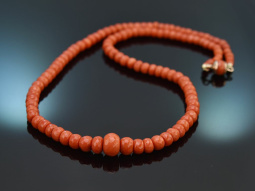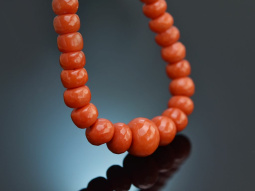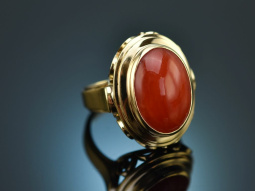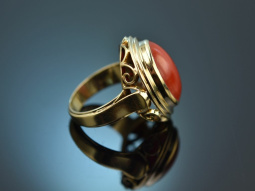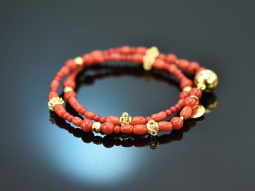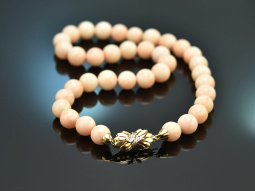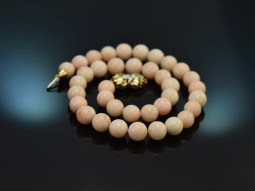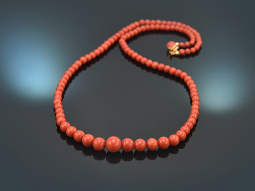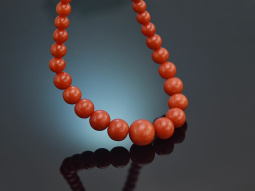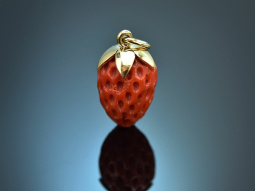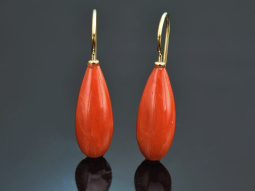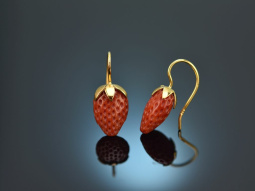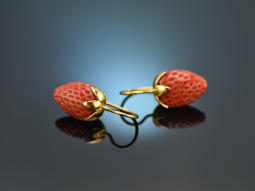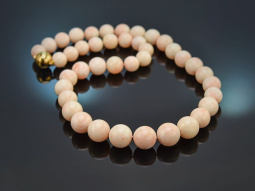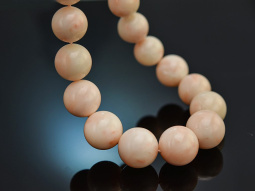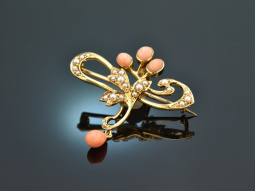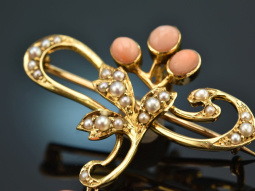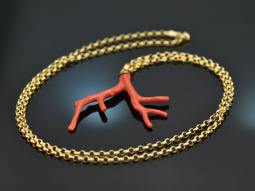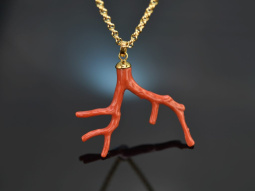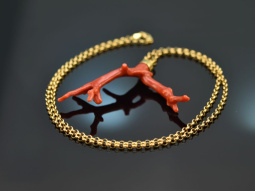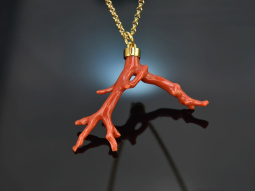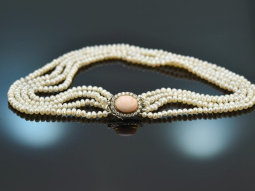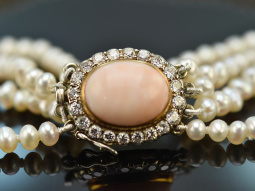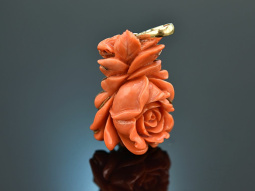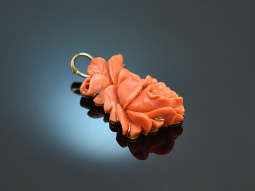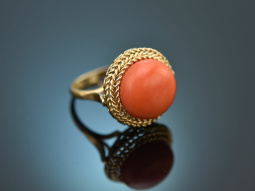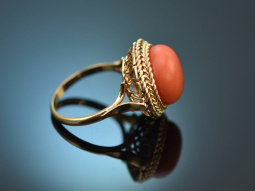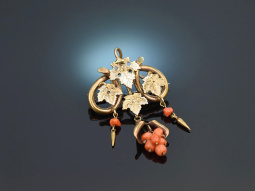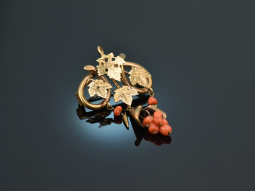Coral
At Halsbandaffaire, we offer antique and modern coral jewellery. We always pay attention to the origin of the precious material and only stock pieces of jewellery made from Italian Mediterranean coral. Our vintage and antique jewellery pieces are also carefully checked for authenticity and origin. So take a look at the most beautiful treasures of the sea with us! Find out more »
Coral species at a glance

Corals belong to the colony-forming cnidarians and are native to salt water. The so-called stony corals form skeletons through calcium deposits, which in turn have been used for centuries to make pieces of jewellery for the nobility, clergy and later also the bourgeoisie. The red Mediterranean coral, also known as corallium rubrum, enchants with its colour spectrum, which ranges from bright pink to intense dark red. The use of this coral in combination with gold jewellery is particularly popular, as the warm gold tone brings out the colour of the coral in a particularly beautiful way.
Sardegna coral
A special form of Italian precious coral is the Sardegna coral, which can be found off the coast of Sardinia and impresses with its rich red colour. This Mediterranean coral is the only one that can still be fished to a limited extent and used to make jewellery. To ensure its preservation, our corals also come exclusively from controlled sources from Torre del Greco.
Salmon coral
Salmon coral is also known as Sciacca coral and was native to the coast of Sicily. It was mainly used for jewellery in the late 19th century. Due to its slightly orange colour, its salmon shade, it was particularly valued. The remains of salmon coral are now depleted, so today it can only be found as a component of historical jewellery.
Engelshaut coral
The name of this coral refers to its white base tone, which is interspersed with a delicate pink coloured pattern and resembles the pale red puffs of an angel. Jewellery pieces with angel skin coral often look particularly elegant and can be worn in a variety of ways, as they flatter both light and darker skin types.
Antique coral jewellery from different eras
Noble corals have inspired goldsmiths from all eras to create fascinating jewellery. In Europe, only corals from the Mediterranean were used; Asian deposits were not known for a long time. Long necklaces or rosaries were particularly popular pieces of coral jewellery. The material was also considered to be apotropaic, i.e. to ward off evil, which is why coral was often worn around teething children to relieve pain.
Coral jewellery from the Biedermeier period is generally notable for its opulent design and is known for its rich ornamentation of flowers, foliage, scrolls, knots and bows. Coral jewellery from the Biedermeier period is also pompous; the corals themselves are often designed as boutons or were cut into cameos.
At the turn of the century, coral was often worn in spherical form as multi-row necklaces or bracelets, but coral was also popular in men's jewellery. For example, pins with coral boutons were favoured here.
Also in costume jewellery also used the red jewel from the sea and in the first half of the 20th century, coral was often used to make multi-row choker necklaces, which were decorated with coral cameo clasps.
From the 1950s onwards, there was an economic boom, which was also reflected in contemporary jewellery designs. Large, high-quality jewellery objects were in vogue. From the mid-20th century, coral appeared above all in opulent and glamorous designs in yellow gold, set with large cabochons and boutons or made from a variety of coral strands.
Modern coral jewellery
Our modern coral jewellery comes from two small manufactories in Germany and Italy or is handcrafted in our own atelier or by our goldsmith. We only use Italian Mediterranean corals, which we source directly from Torre del Greco, and turn them into long chains or necklaces, earrings and bracelets. We are also happy to make your own personal piece of jewellery on request.
How to care for your coral jewellery properly

Coral jewellery is both sensitive to heat and not very resistant to chemicals, which is why it should not be treated with aggressive cleaning agents. You should also be careful when in contact with cosmetic products such as creams, hairspray or perfume so as not to damage the precious material. These instructions should also be followed with regard to pearl jewellery.
If you wear coral jewellery on bare skin, we recommend cleaning it with clear, lukewarm water after wearing it. Then dry the piece of jewellery with a soft cloth.
It is also important not to expose coral jewellery to direct sunlight. We therefore recommend storing it in a suitable case.
